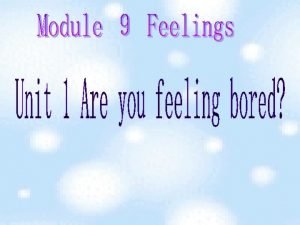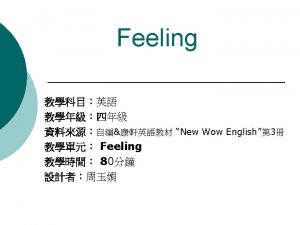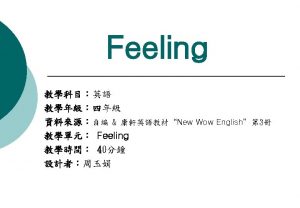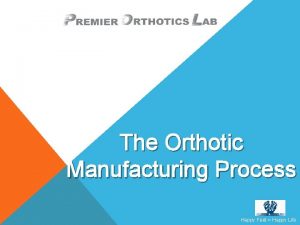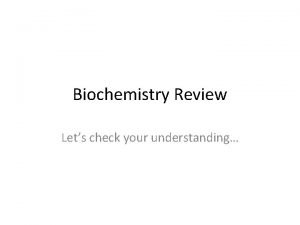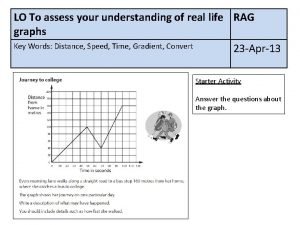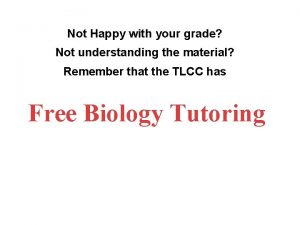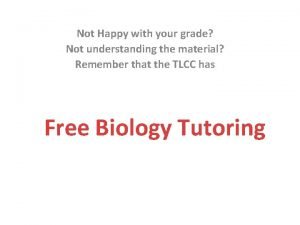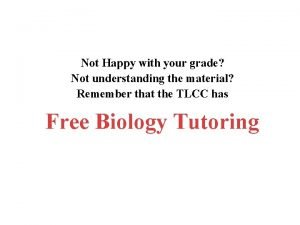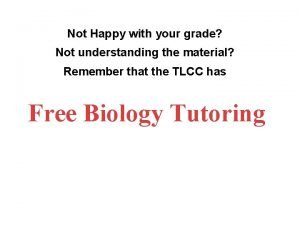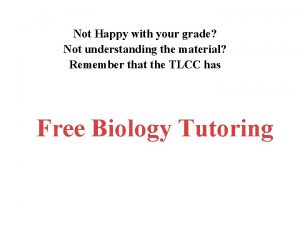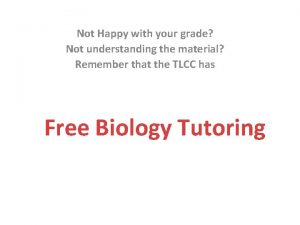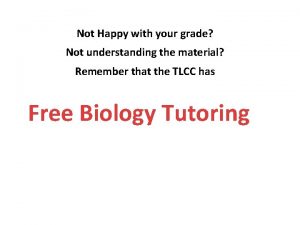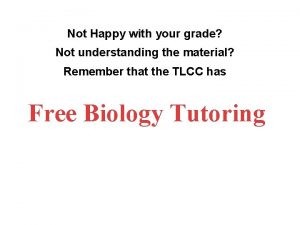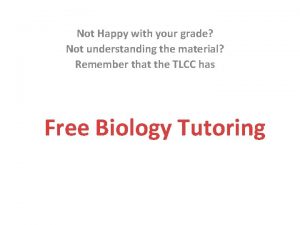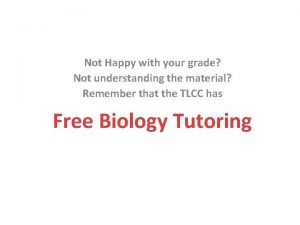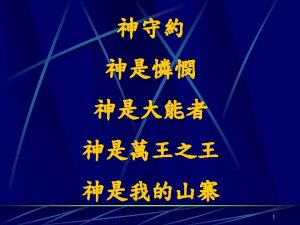Not Happy with your grade Not understanding the




































- Slides: 36

Not Happy with your grade? Not understanding the material? Remember that the TLCC has Free Biology Tutoring

Don’t forget about the free tutoring in the TLCC!!!! Parts of the Cell Lecture Power. Point For CHAPTER 3 Cell Function and Structure

Stuff you need to be able to answer 1. prokaryotic and eukaryotic cells: similarities and differences? 2. Diffusion & osmosis: What’s moving, why, and where’s it going 3. How do antibiotics target bacteria, 4. Names and functions of eukaryotic organelles

1928, Alexander Fleming saw fungus can stop bacteria from growing.

Wonder drug Antibiotic (against life) • chemical that can slow or stop the growth of bacterial life forms (no harm to humans/animals) • often naturally produced by living organisms • For example, penicillin is produced by Penicillium notatum (bread mold) Later: how does antibiotic target bacterial cells (will discuss later)

Cells All living things are made of cells

Eukaryotic cells Resist effects of antibiotics Have organelles (mini organs) in membranes Be able to identify/label these and know function

Cells Only prokaryotic cells have • Their DNA floating in cytoplasm • No organelles Only eukaryotic cells have • A nucleus: organelle holding the DNA • Many organelles Many (most? ? ? ) prokaryotes have cell wall

Cells Prokaryotic cells: no organelles (especially, no nucleus) Eukaryotic cells: membrane-bound organelles, including a nucleus

Cells All cells (both Prokaryotic and eukaryotic) have • A cell membrane of phospholipids and proteins (sometimes called “plasma membrane”) • Cytoplasm: gelatinous aqueous interior. (between nucleus and plasma membrane) • Ribosomes: made of RNA and protein, hooks amino acids together to make a protein • DNA as a molecule of heredity deoxyribonucleic acid (be able to spell it)

Nucleus • Holds most of cell’s DNA • Surrounded by the nuclear envelope • Double membrane • Nucleolus - Where we read DNA and make RNA

Nucleolus Dark spot in nucleus Place where we read DNA and make RNA Some of that RNA – the m. RNA – is a message with info to make protein m. RNA leaves nucleus through Nuclear pore

Endoplasmic Reticulum (ER) • Network of membrane-covered “pipes” • Proteins and lipids synthesized here • Rough ER - has ribosomes • Smooth ER

Golgi Apparatus • Stacked membranous discs (often drawn like stack of pancakes squished in the middle) • Packages and transports proteins • Cis face and Trans face

Making stuff: A shared job Nucleus, ER, and Golgi apparatus work together to produce and transport proteins

Lysosomes “lyse” means “to break” • Full of digestive enzymes • Break down worn-out cell parts or molecules • Recycle

Cytoskeleton (know all 3) • Network of protein fibers • Variety of functions, including cell support, cell movement, and movement of structures within cells • Three types of proteins

mitochondria • Cells power plants • Extract energy from food • Convert energy into a useful form (ATP) Glucose ATP (like coal electricity)

Eukaryotic organelles Chloroplasts • Plant and algae cells • Two membranes • Sites of photosynthesis – capture sunlight, use energy to make sugars

Central Vacuole • Water enters cell & fills central vacuoles • Causes turgor pressure • (more info in next ppt)

Remember: animal and plant cells Mitochondria: animal and plant cells Central vacuoles: mostly plant cells (uncommon in animal cells) Chloroplasts: Plants not animals (unless stolen) Both have mitochondria

Origin of eukaryotic cells Endosymbiosis theory • Big prokaryotes take in little prokaryotes, little ones become eukaryotic organelles • Mitochondria and chloroplasts evidence – Double membrane – Own DNA – Own ribosomes – Own histone proteins like prokaryote

Cell Wall Cell wall = rigid structure around cell membrane prokaryotes have walls of peptidoglycans Many antibiotics attack prokaryote cell walls: more info towards end Some eukaryotes also have a cell wall plants = cellulose fungi = chitin protist: may or may not have wall animal: no cell wall

The cell membrane • Prevents many large molecules, like glucose, and hydrophilic (charged) substances, like sodium ions, from crossing • Allows small uncharged substance to cross – via diffusion (movement of solutes from high concentration to low)

The cell membrane • All cells surrounded by a cell membrane – a phospholipid bilayer with embedded proteins that forms the boundary of all cells – Semipermeable Hydrophillic head Hydrophobic tail

The cell membrane Semipermeable • Structure is partly hydrophobic and hydrophilic • In aqueous environment, phospholipids forms a bilayer – Hydrophilic heads out toward water – Hydrophobic tails in away from water

Antibiotics: attacking cell wall Bacterial cell walls are rigid due to peptidoglycan • a polymer made of sugars and amino acids • allows bacteria to survive in watery environment • Penicillin weakens cell wall • Bacterial cells fills up with water and burst due to osmosis “Water wants to dilute stuff” – lots more on this below

Some bacteria are resistant Bacteria cells are either • Gram-positive —cell wall with layer of peptidoglycan that retains the Gram stain • Gram-negative — cell wall layer of peptidoglycan surrounded by lipid membrane that does not retain the Gram stain — prevents penicillin from reaching the peptidoglycan underneath

Another killing method • Streptomycin: interferes with prokaryotic ribosomes • Leaves eukaryotic ribosomes unaffected

Antibiotic target prokaryotic cells Osmosis – “water wants dilute stuff” or “water follows salt” – The diffusion of water across a semipermeable membrane from an area of lower-solute concentration to an area of higher-solute concentration – Hypotonic vs. hypertonic vs. isotonic

Antibiotics target prokaryotic cells • Antibiotics can cross prokaryotic cell membrane using transport proteins • Bacteria can resist antibiotics using transport proteins as well – Some bacteria can pump antibiotics out!!!

Summary • Antibiotics are chemicals, originally produced by living organisms, that selectively target and kill bacteria. • All living organisms are made of cells, and new cells arise from existing cells. • Two types of cells, distinguished by their structure: prokaryotic and eukaryotic. • All cells are enclosed by a cell membrane, which controls the passage of molecules between the exterior of the cell and the cytoplasm. • Substances cross cell membranes by simple or facilitated diffusion or by active transport. • Water crosses cell membranes by osmosis. • All cells have ribosomes: complexes of RNA and proteins that synthesize new proteins. • Eukaryotic cells contain a number of specialized organelles.

Review and Concept Questions

Concept Quiz The main difference between active and passive transport is A. Passive transport goes up a concentration gradient. B. Active transport goes down a concentration gradient. C. Active transport requires energy. D. Passive transport requires energy.

Concept Quiz _____ involves the ingestion of specific molecules by the membrane A. Endocytosis B. Pinocytosis C. Exocytosis D. Receptor‑mediated endocytosis

Not Happy with your grade? Not understanding the material? Remember that the TLCC has Free Biology Tutoring
 I am happy you are happy he is happy
I am happy you are happy he is happy Lean not on your own understanding song
Lean not on your own understanding song Lean not on your own understanding
Lean not on your own understanding Sad:happy-bored:
Sad:happy-bored: Crazy ip scanner
Crazy ip scanner Happy sad angry surprised
Happy sad angry surprised Gecko orthotics
Gecko orthotics Give us your hungry your tired your poor
Give us your hungry your tired your poor Be happy that your name is written in heaven
Be happy that your name is written in heaven Hapy nod
Hapy nod Understanding your stakeholders
Understanding your stakeholders The ability to locate interpret and apply information
The ability to locate interpret and apply information Chapter 1 health and wellness fundamentals
Chapter 1 health and wellness fundamentals Understanding your health and wellness chapter 1
Understanding your health and wellness chapter 1 Chapter 1 understanding health and wellness
Chapter 1 understanding health and wellness Let's check your understanding
Let's check your understanding Understanding your business finances
Understanding your business finances Understanding your digital footprint
Understanding your digital footprint Chapter one understanding health and wellness
Chapter one understanding health and wellness Assess your understanding
Assess your understanding Understanding your intuition
Understanding your intuition Real life graphs
Real life graphs Sudden and violent but brief; fitful; intermittent
Sudden and violent but brief; fitful; intermittent Macbeth stylistic devices
Macbeth stylistic devices Importance of constitution of india
Importance of constitution of india Be happy not because everything is good
Be happy not because everything is good Ann handball very well
Ann handball very well And the tree was happy but not really
And the tree was happy but not really Show not tell sentences
Show not tell sentences Hình ảnh bộ gõ cơ thể búng tay
Hình ảnh bộ gõ cơ thể búng tay Bổ thể
Bổ thể Tỉ lệ cơ thể trẻ em
Tỉ lệ cơ thể trẻ em Voi kéo gỗ như thế nào
Voi kéo gỗ như thế nào Tư thế worms-breton
Tư thế worms-breton Chúa yêu trần thế alleluia
Chúa yêu trần thế alleluia Các môn thể thao bắt đầu bằng tiếng bóng
Các môn thể thao bắt đầu bằng tiếng bóng



